“Selfies” are all the rage this year, and even bears have jumped on the trend.
Especially the shaggy-coated, termite-loving sloth bears (Melursus ursinus), who seem particularly fascinated by the cameras that scientists have put up in forests to secretly capture their stealthy moves.
On November 26 at 7:30 PM, one curious sloth bear decided to take a closer look at such a camera that researcher Sanjay Gubbi and his team from the Nature Conservation Foundation installed in a eucalyptus plantation in the southern Indian state of Karnataka. The bear jostled with the camera for a while, and tore open the belt that held it to a tree stump before flinging it to the ground. However, another camera installed on an opposite tree sneakily clicked away, capturing the inquisitive bear.
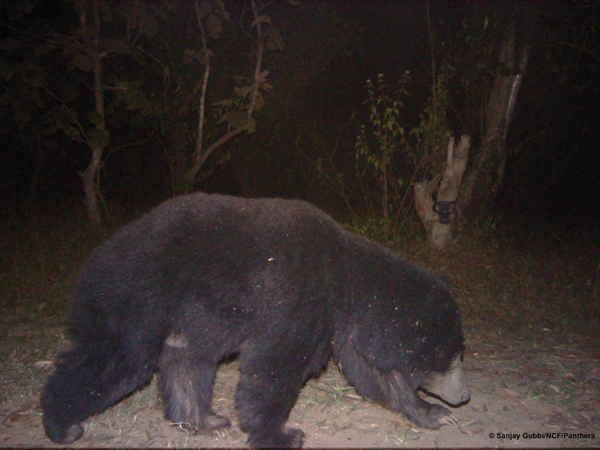 A bear caught on camera trap. Photo courtesy of Sanjay Gubbi/NCF/Panthera.
A bear caught on camera trap. Photo courtesy of Sanjay Gubbi/NCF/Panthera.

The camera captures the sloth bear before it starts to pull it down. Photo courtesy of Sanjay Gubbi/NCF/Panthera.

The sloth bear investigating the camera. Photo courtesy of Sanjay Gubbi/NCF/Panthera.
Later that night, the same camera also recorded a gaur (Bos gaurus), a wild pig (Sus scrofa) with its many piglets, and the ever-elusive leopard (Panthera pardus), all seemingly unperturbed by the preceding event.
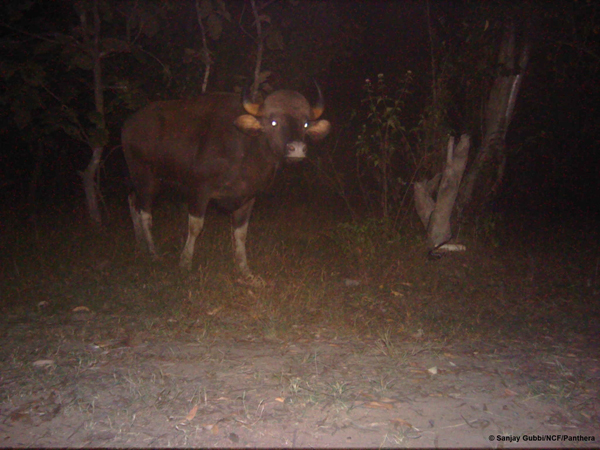
The opposite camera captures a gaur, as the battered camera lies on the ground. Photo courtesy of Sanjay Gubbi/NCF/Panthera.

The opposite camera captures a wild pig with its many piglets. Photo courtesy of Sanjay Gubbi/NCF/Panthera.

The opposite camera captures a leopard. Photo courtesy of Sanjay Gubbi/NCF/Panthera.
In a separate incident, about five miles away, another sloth bear took a fancy to another camera. Only this time, it decided to get a little creative and flipped the camera over. Over the next 30 hours, the camera took nearly two thousand photographs – capturing not wildlife but hundreds of tiny leaves, the rustling of which continually triggered its motion sensor.
The bears perhaps need more than just a peep to satisfy their curiosity.

A sloth bear investigating and flipping a camera. Sanjay Gubbi/NCF/Panthera.
Special note: The author works with researcher Sanjay Gubbi and his team.
Related articles
Top 10 HAPPY environmental stories of 2013

(12/19/2013) China begins to tackle pollution, carbon emissions: As China’s environmental crisis worsens, the government has begun to unveil a series of new initiatives to curb record pollution and cut greenhouse emissions. The world’s largest consumer of coal, China’s growth in emissions is finally slowing and some experts believe the nation’s emissions could peak within the decade. If China’s emissions begin to fall, so too could the world’s.
Camera traps find less mammals than expected in Costa Rican corridor
(12/16/2013) A new study using camera traps in mongabay.com’s open-access journal Tropical Conservation Science has surveyed the diversity of medium and large-sized predators in the San Juan-La Selva biological corridor in Costa Rica, whilst also demonstrating how alteration of habitat is affecting the use of this corridor.
Big data shows tropical mammals on the decline

(12/12/2013) The world’s largest remote camera trap initiative—monitoring 275 species in 17 protected areas—is getting some big data assistance from Hewlett-Packard (HP). To date, the monitoring program known as the Tropical Ecology Assessment and Monitoring (TEAM) Network has taken over 1.5 million photos of animals in 14 tropical countries, but conservationists have struggled with how to quickly evaluate the flood of data.
Little dude takes the prize: rare dormouse wins BBC camera trap contest (photos)
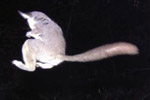
(12/02/2013) The image of a rare dormouse has won the fourth annual BBC Wildlife Camera-Trap Photo of the Year award. Photographed in Turkey, the Roach’s mouse-tailed dormouse (Myomimus roachi) is listed as Vulnerable by the IUCN Red List with its habitat rapidly disappearing for agriculture. The photo took the grand prize out of 850 entries from around world in a contest that takes into account the scientific importance of submitted photos.
Camera traps reveal Amur leopards are breeding in China (photos)
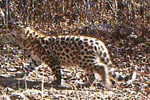
(11/26/2013) Good news today about one of the world’s rarest mammals today: camera traps in China’s Wangqing Nature Reserve have captured the first proof of breeding Amur leopards in the country, according to the Wildlife Conservation Society (WCS). The photos show a mother Amur leopard with two cubs. A recent survey by WWF-Russia estimated the total wild population of Amur leopards at just 50 individuals, but that’s a population on the rise (from a possible nadir of 25) and expanding into long-unused territory.

(11/21/2013) Oil, gas, timber, gold: the Amazon rainforest is rich in resources, and their exploitation is booming. As resource extraction increases, so does the development of access roads and pipelines. These carve their way through previously intact forest, thereby interrupting the myriad pathways of the species that live there. For species that depend on the rainforest canopy, this can be particularly problematic.
Asia’s ‘unicorn’ photographed in Vietnam
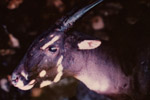
(11/12/2013) In 1992, scientists made a spectacular discovery: a large, land mammal (200 pounds) that had somehow eluded science even as humans visited the moon and split the atom. Its discoverers, with WWF and Vietnam’s Ministry of Forestry, dubbed the species the saola (Pseudoryx nghetinhensis). Found in the Annamite Mountains in Laos and Vietnam, the saola is a two-horned beautiful bovine that resembles an African antelope and, given its rarity, has been called the Asian unicorn. Since its discovery, scientists have managed to take photos via camera trap of a wild saola (in 1999) and even briefly studied live specimens brought into villages in Laos before they died (in 1996 and again in 2010), however the constant fear of extinction loomed over efforts to save the species. But WWF has announced good news today: a camera trap has taken photos of a saola in an unnamed protected area in Vietnam, the first documentation of the animal in the country in 15 years.
Could camera trap videos galvanize the world to protect Yasuni from oil drilling?

(11/07/2013) Even ten years ago it would have been impossible to imagine: clear-as-day footage of a jaguar plodding through the impenetrable Amazon, or a bicolored-spined porcupine balancing on a branch, or a troop of spider monkeys feeding at a clay lick, or a band of little coatis racing one-by-one from the dense foliage. These are things that even researchers who have spent a lifetime in the Amazon may never see. Now anyone can: scientists at the Tiputini Biodiversity Station in Ecuador’s Yasuní National Park have recently begun using camera trap videos to take movies of animals few will ever view in their lifetimes. The videos—following years of photo camera trapping—provide an intimate view of a world increasingly threatened by the oil industry.
World’s most cryptic feline photographed in logging concession

(11/04/2013) The bay cat is arguably the world’s least-known member of the cat family (Felidae). Although first described by scientists in 1874, no photo existed of a living specimen until 1998 and a wild cat in its rainforest habitat wasn’t photographed until five years later. Given this, scientists with Zoological Society of London (ZSL) and Imperial College London were taken aback when their remote camera traps captured numerous photos of these elusive cats hanging out in a commercial logging concession in Sabah, a state in Malaysian Borneo.
Armored giant turns out to be vital ecosystem engineer
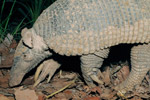
(10/24/2013) The giant armadillo (Priodontes maximus) is not called a giant for nothing: it weighs as much as a large dog and grows longer than the world’s biggest tortoise. However, despite its gigantism, many people in its range—from the Amazon to the Pantanal—don’t even know it exists or believe it to be more mythology than reality. This is a rare megafauna that has long eluded not only scientific study, but even basic human attention. However, undertaking the world’s first long-term study of giant armadillos has allowed intrepid biologist, Arnaud Desbiez, to uncovered a wealth of new information about these cryptic creatures. Not only has Desbiez documented giant armadillo reproduction for the first time, but has also discovered that these gentle giants create vital habitats for a variety of other species.
Featured video: bears work together to take down camera traps
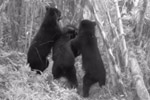
(10/24/2013) Scientists with the Wildlife Conservation Society (WCS) have captured stunning images of Andean bear families taking down camera traps in Bolivia’s Apolobamba National Natural Area of Integrated Management. In one series of images a mother and her two cubs bite, claw, and whack one of the cameras. However even as they destroy one camera, the bears’ antics are captured by another as researchers typically set several cameras to capture different views of animals, a process that helps them identify individuals.
Honey badgers and more: camera traps reveal wealth of small carnivores in Gabon (photos)
.150.jpg)
(10/17/2013) Gabon has lost most of its big meat-eaters including lions, spotted hyenas, and African wild dogs (although it’s still home to leopards), but a new study focuses on the country’s lesser-known species with an appetite for flesh. For the first time, researchers surveyed Gabon’s small carnivores, including 12 species from the honey badger (Mellivora capensis) to the marsh mongoose (Atilax paludinosus).
Tapirs, drug-trafficking, and eco-police: practicing conservation amidst chaos in Nicaragua
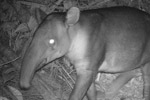
(10/10/2013) Nicaragua is a nation still suffering from deep poverty, a free-flowing drug trade, and festering war-wounds after decades of internecine fighting. However, like any country that has been largely defined by its conflicts, Nicaragua possesses surprises that overturn conventional wisdom. Not the least of which is that the Central American country is still home to big, stunning species, including jaguars, giant anteaters, pumas, and the nation’s heaviest animal, the Baird’s tapir (Tapirus bairdii). Still, not surprisingly given the nation’s instability, most conservationists have avoided Nicaragua. But tapir-expert Christopher Jordan, who has worked in the country for over four years, says he wouldn’t have it any other way.